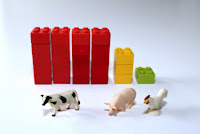Researchers at Chalmers University of Technology and SP Technical Research Institute of Sweden studied a range of measures for cutting food-related emissions. Besides reductions in beef and dairy consumption, they found that technology improvements will be crucial. Under favorable conditions, better technology could cut these emissions by as much as 50 percent.
"Emissions from manure storage can all but be eliminated if the facilities are covered and waste gases are flared, says David Bryngelsson, lead author of the study. And emissions from fertilizer production can largely be avoided by using the latest technology. However, far more ambitious climate policies for agriculture are needed to make these technology improvements happen."
The technological prospects for cattle are less promising, according to the researchers. This is a critical finding, since cattle account for a very large share of the emissions. The study therefore concludes that reductions in beef consumption are necessary for meeting the climate targets.
"But we don't have to give up meat entirely," says Stefan Wirsenius, co-author of the study. "Poultry and pork cause rather low emissions, in a range equivalent to 10 to 30 kilos of carbon dioxide per kilo of protein, while beef cause 200 kilos per kilo protein. So we can continue to eat large quantities of poultry and pork -- provided that we cut back on beef."
Cheese and other dairy products are also serious climate problems, according to the study.

No comments:
Post a Comment